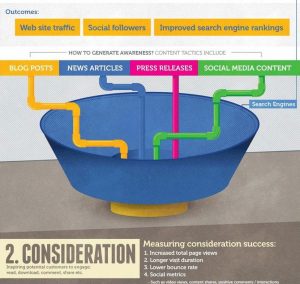Prepare your DAM for automated tagging, enhanced search and other AI capabilities with solid data and governance foundations.
Like any transformative technological change in our history, the growing importance and availability of artificial intelligence (AI) will affect the people, processes, technologies and data powering our business operations. Its potential is unlimited.
This is both exciting and concerning. It forces us to think about the potential in terms of actual processes right across the marketing function. For example, is your DAM ready for AI?
“By far, the greatest danger of artificial intelligence is that people conclude too early that they understand it.“
— Eliezer Yudkowsky
AI and the future of DAM
Digital asset management, as a process, will remain near the core of the martech stack. Digital content should be viewed as the connection between people, process and technology. However, with the rapid emergence and integration of AI-powered technologies, DAM systems will soon be able to do even more than ever.
- AI-powered image search can improve the discovery and findability of the specific images or videos you may need. Metadata-based searches will be enhanced by AI-powered image recognition capabilities that can appraise and determine the probability of images featuring similar content, allowing your users to discover content in new ways.
- AI technologies can optimize asset ingestion, automating tasks such as tagging, categorizing and describing digital assets, saving time and money. With AI-based auto-tagging features, the DAM solution applies relevant metadata and keywords to individual assets based on image scanning and facial recognition, realizing substantial time savings.
- Generative AI functionality can make DAM systems more efficient and user-friendly, fostering team collaboration and speeding up the concept-to-market iterative process. AI-powered tools can optimize brand management by flagging inconsistent brand assets and generating brand-consistent content based on location, audience and other factors.
AI will increasingly play a critical role in how we manage, modify and optimize digital assets. It can potentially improve all aspects of DAM — from managing metadata, to enhancing search and discovery, to streamlining workflow and automation processes.
DAM is being transformed as a fundamental process within creative and marketing operations. Even so, remember that with the integration of AI in DAM systems, the robots should not work in splendid isolation. Strategic human interaction with metadata, process, workflow and more will always be needed through the entire DAM process and asset lifecycle.
Preparing your DAM for AI
There are many ways in which AI may enhance, improve and assist DAM — but first, your data needs to be made ready. Business-critical metadata fields and relationships must be identified to prepare your data models for AI integrations.
Leveraging meaningful metadata such as public domain data (e.g., color, shape, sentiment) and other business-centric data (e.g., product hierarchy, ingredients, etc.) is crucial for contextualizing and categorizing your digital assets in the DAM.
In taking the first steps toward your AI-powered business transformation, consider the following questions:
- What are your AI goals with DAM? What is your strategy?
- What are the business-critical data points for your digital assets?
- What data do you have to train the AI and where is it?
- How will you access and distribute your data?
- What technology will you use for AI?
- How will you govern and evaluate your AI?
Good, trusted, authentic data is critical to AI functionality. Trust and certainty that the data is accurate and usable are necessary for success. As always, be mindful of the people, processes and technologies that may influence data and learning within business.
The DAM future is now
While the lasting impact of AI technologies remains to be seen, businesses will appreciate the cost efficiencies and increased consumer engagement and experiences they can provide today.
The future is now and AI-enhanced opportunities for greater connection and sharing of ideas are within our grasp. Content is critical to business operations and must be managed at all points of a digital lifecycle.
Leveraging meaningful metadata in contextualizing, categorizing and accounting for data provides the best chance for its ROI — all enhanced by AI. The AI-enabled digital experience for DAM users will be defined by their improved ability to identify, discover and experience an organization’s brand just as intended.
Content is what drives your DAM and, more importantly, your brand. Think about what your content does for you, but also what it does for your users. If DAM is a journey, then content is the road upon which you travel. Embrace these AI-enriched opportunities and make them meaningful for you and your users.
The post The opportunities for AI in digital asset management appeared first on MarTech.
MarTech(16)
Report Post


